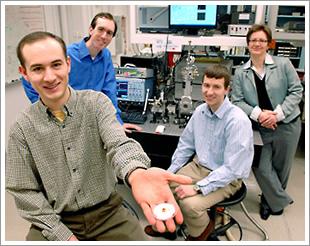Moving innovations from discovery through to commercialization involves numerous actors, often including academic researchers, small businesses, the investor community, and commercial industry. At one end of the spectrum – academe – there is a heavy concentration of government investment in fundamental research. At the other, in the commercial marketplace, there is a much higher level of industry investment in direct product development. In between lies the so-called Valley of Death, where many potential innovations die for lack of resources needed to develop them to a stage where industry or investors can recognize and exploit their commercial potential. Crossing that valley requires a complex interplay of relationships along the innovation spectrum. Common approaches include developing formal vehicles for collaboration, such as nondisclosure agreements and memoranda of understanding, or creating opportunities for actors to circulate among different entities through visiting-scientist or postdoctoral programs, sabbaticals, or consultant arrangements. Additional vehicles for promoting interaction – topical conferences, cross-disciplinary institutes, or centers of excellence – create the intangibles of the innovation ecosystem, improving the odds a venture (i.e. a successful crossing of the Valley of Death) will succeed. Examples of successful innovation ecosystems include the Semiconductor Research Corp.’s investments, which have enabled industry’s continued advancement along the semiconductor road map well beyond its predicted sunset. SRC acts to stimulate and advance collaboration between university researchers – usually supported by government grants – and high-tech industries. Another is the National Science Foundation’s Engineering Research Centers. NSF ERC Program Director Dr. Deborah Jackson has authored a white paper that describes the innovation ecosystem in greater detail.
Downloads
Moving innovations from discovery through to commercialization involves numerous actors, often including academic researchers, small businesses, the investor community, and commercial industry. At one end of the spectrum – academe – there is a heavy concentration of government investment in fundamental research. At the other, in the commercial marketplace, there is a much higher level of industry investment in direct product development. In between lies the so-called Valley of Death, where many potential innovations die for lack of resources needed to develop them to a stage where industry or investors can recognize and exploit their commercial potential. Crossing that valley requires a complex interplay of relationships along the innovation spectrum. Common approaches include developing formal vehicles for collaboration, such as nondisclosure agreements and memoranda of understanding, or creating opportunities for actors to circulate among different entities through visiting-scientist or postdoctoral programs, sabbaticals, or consultant arrangements. Additional vehicles for promoting interaction – topical conferences, cross-disciplinary institutes, or centers of excellence – create the intangibles of the innovation ecosystem, improving the odds a venture (i.e. a successful crossing of the Valley of Death) will succeed. Examples of successful innovation ecosystems include the Semiconductor Research Corp.’s investments, which have enabled industry’s continued advancement along the semiconductor road map well beyond its predicted sunset. SRC acts to stimulate and advance collaboration between university researchers – usually supported by government grants – and high-tech industries. Another is the National Science Foundation’s Engineering Research Centers. NSF ERC Program Director Dr. Deborah Jackson has authored a white paper that describes the innovation ecosystem in greater detail.


